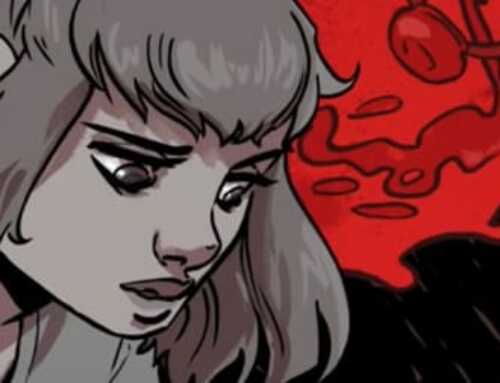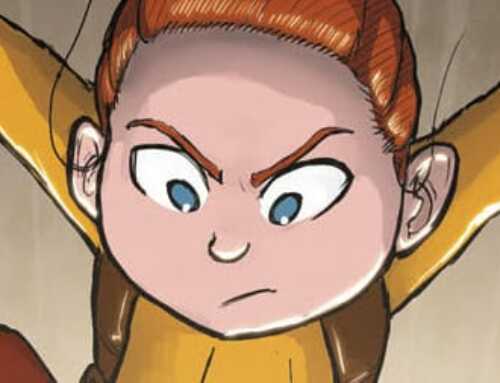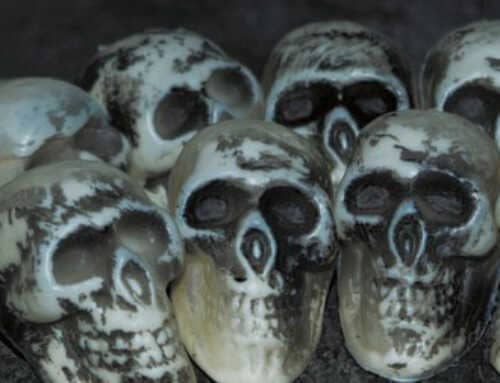In the penthouse of Banyan Court, thirteen strangers are the last to see their vastly wealthy and mysterious host, Tobias Fell, alive. Thirteen Storeys, by Jonathan Sims, is a horror anthology for a new age, following strangers who are dragged together by a force they cannot see. Sims brings the elevator to each landing, all the way to the top of Banyan Court. Along the way, our strangers start to see the walls of the apartment building house much more than tenants.
penthouse of Banyan Court, thirteen strangers are the last to see their vastly wealthy and mysterious host, Tobias Fell, alive. Thirteen Storeys, by Jonathan Sims, is a horror anthology for a new age, following strangers who are dragged together by a force they cannot see. Sims brings the elevator to each landing, all the way to the top of Banyan Court. Along the way, our strangers start to see the walls of the apartment building house much more than tenants.
Thirteen Storeys is exactly that: thirteen stories. Each chapter a new point of view, a new person who in some way or other is involved with Banyan Court. Sims does an excellent job in the short form; he uses forms of exposition that never feel heavy-handed and forced. Sim’s characters are easily believable, relatable, and not once did I feel like my reading experience was disjointed by the format.
The building itself is a character. Banyan Court, named for the Banyan tree, is an apartment building with twelve floors and a penthouse in which the mysterious and reclusive billionaire owner resides. The apartment building was created to be luxury apartments, but with local housing laws, half of the offerings were sanctioned for low-income housing.
True Crime fans will be familiar with the Cecil Hotel in Los Angeles. The Cecil has many claims to fame: the night stalker lived there, the Black Dahlia allegedly was last alive there, and every ghost hunting enthusiast and travel channel show has done an in-depth investigation. Banyan Court immediately gave me Hotel Cecil vibes. The Cecil too was sanctioned for low-income housing but tried to rebrand itself as a high-class hostel for the young trendy traveler. The Cecil and Banyan Court both have two entrances, two identities; the tenants are made extremely aware of the social-economic device. Through Thirteen Storeys we are shown horror, paranoia, and guilt plaguing both sides of Banyan Court.
Sims crafts a great ghost story and, as they stand alone, each chapter is strong. My biggest issue was how this book was pitched to me by the dust jacket. To me, it seemed like the publisher was setting you up for a modern murder mystery. This led me to read the first two stories under the impression that these stories would lead me to an answer when in actuality, each story weaves a web around you. A chapter is not presented to give you more clues, but to give you more questions. You start to see common threads begin to link the tenants, but I would argue the last few stories do much more of that scaffolding work than the novel does as a whole. Like all anthologies, some of Sims’ tenants are stronger than others, but by the time each tenant gets their invitation to the penthouse you’ve almost forgotten there is a murder coming.
The ending is chaos: shifting perspectives, implausible explanations, convenient devices. But it’s kinda great? Sims does so much during each story to bring each tenant to their breaking point that it was almost satisfying to have a cacophony of action at the end.
The Banyan tree is a strangler fig that latches onto a host tree. It grows its swirling roots thick into the ground and steals from the host, killing it, and leaving an empty husk inside. Sims tortures the tenants within the husk, with maddening stains, unexplainable pipes, walls that expand and contract like the husk is breathing. Thirteen Storeys is a strong collection of short-form horror, regardless of the extremes presented in its finale.
Rating 6 out of 10 floors







